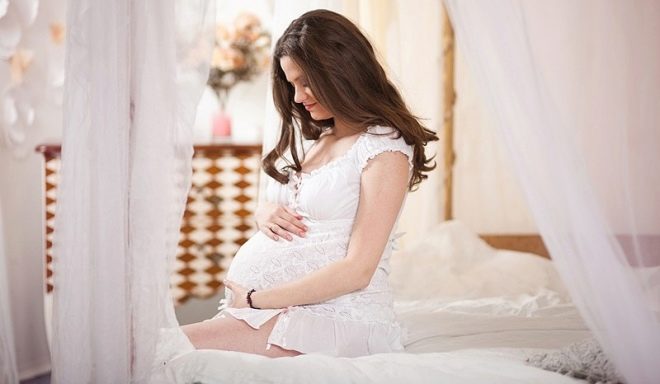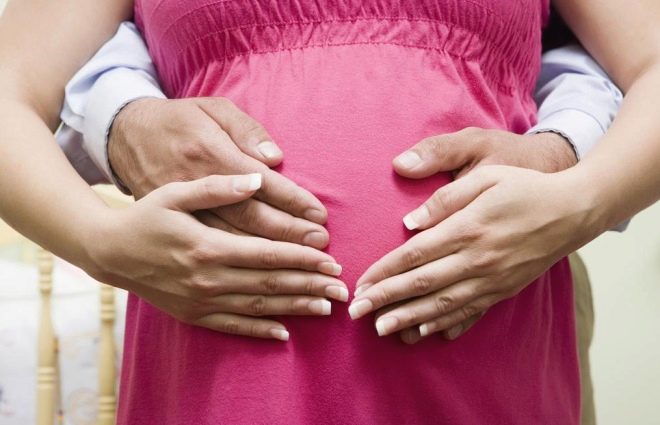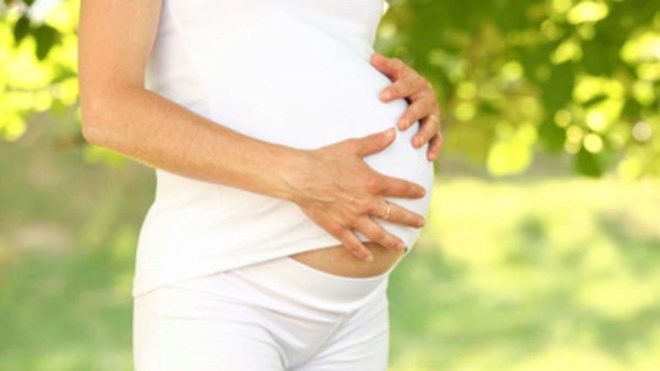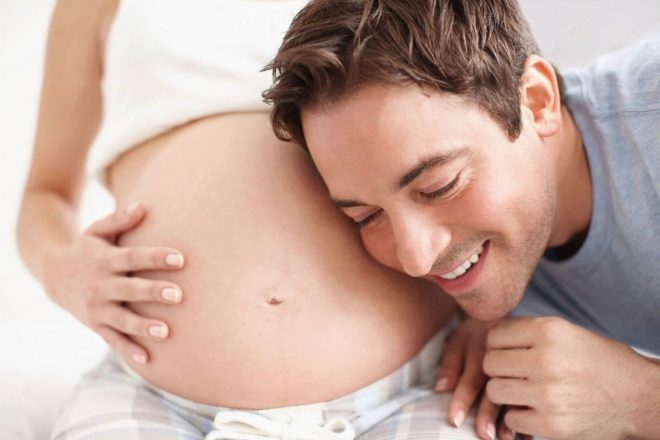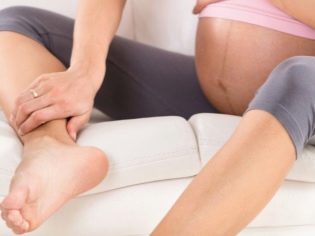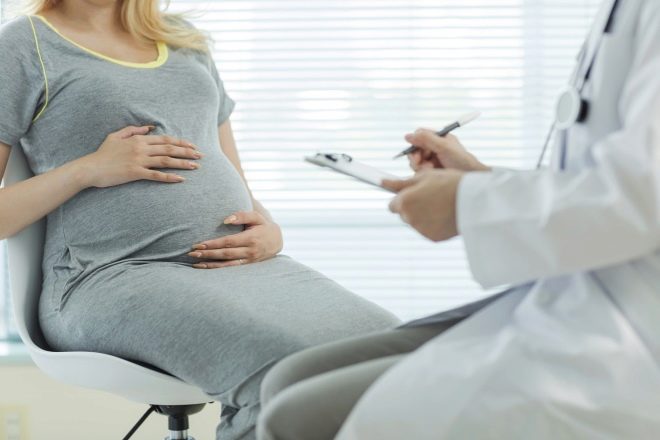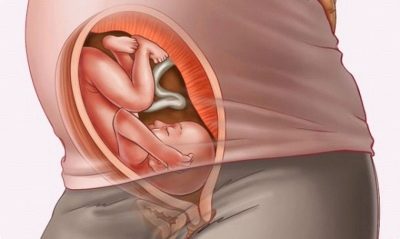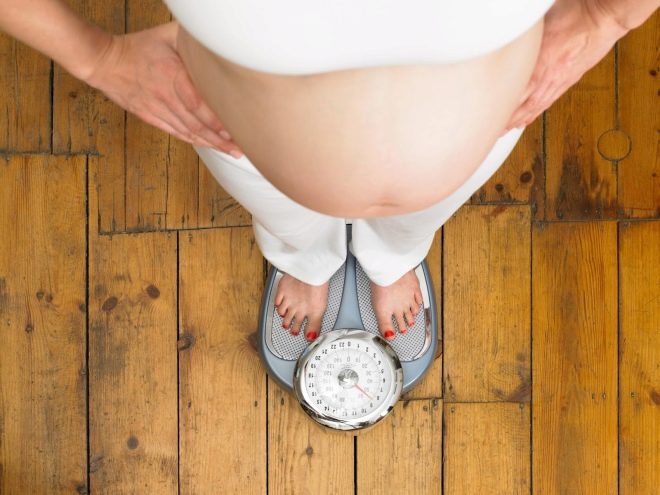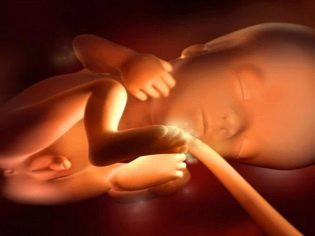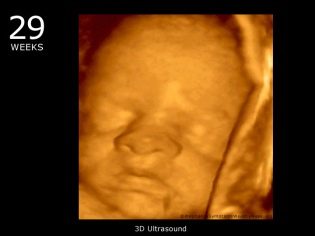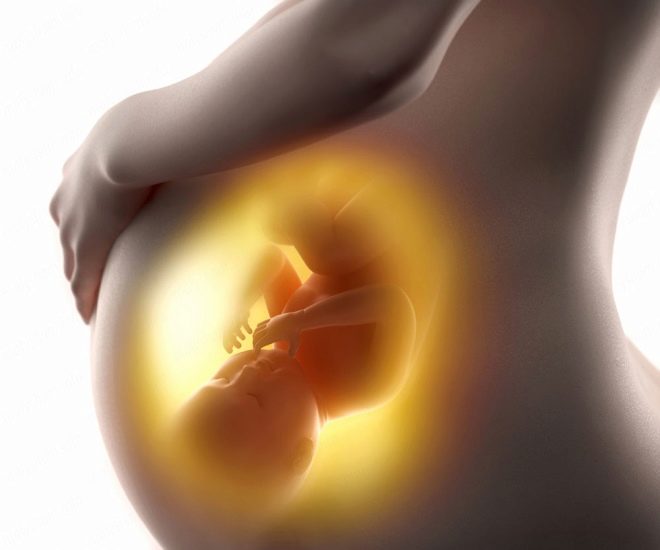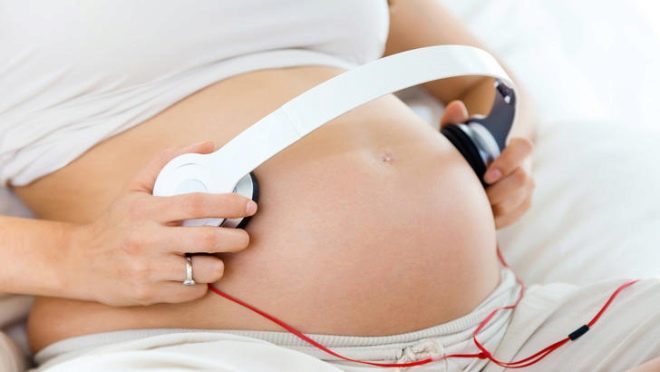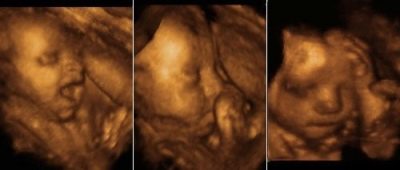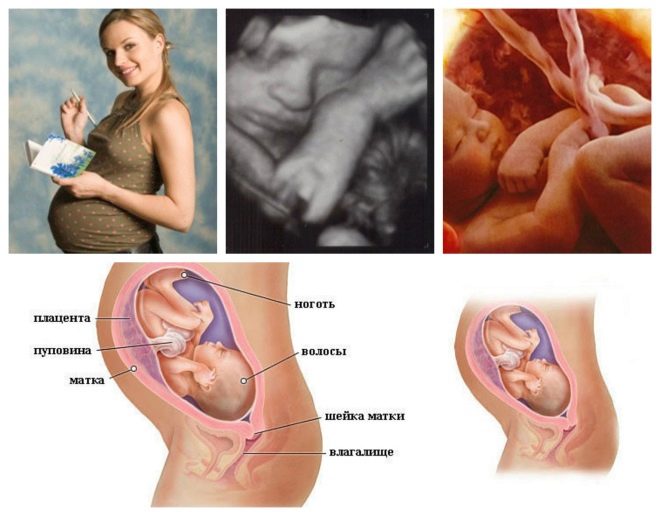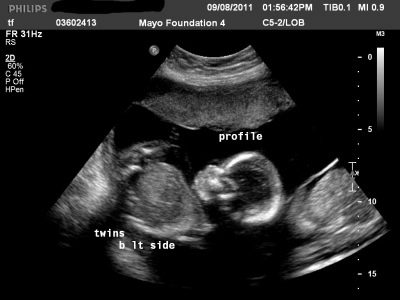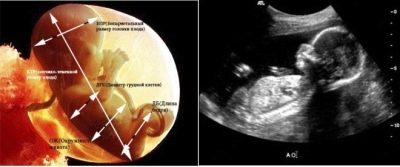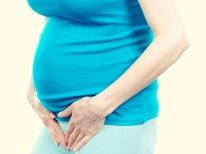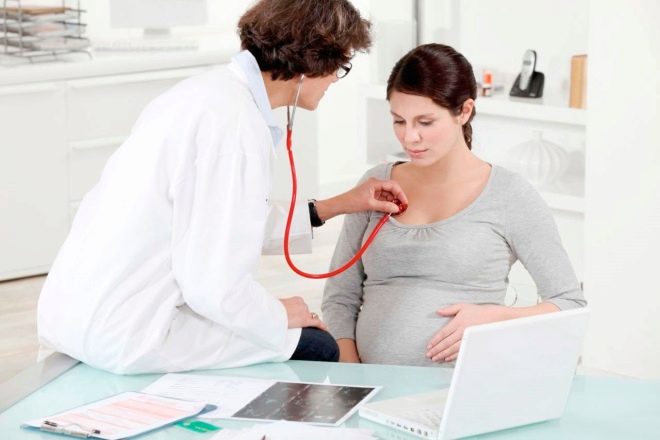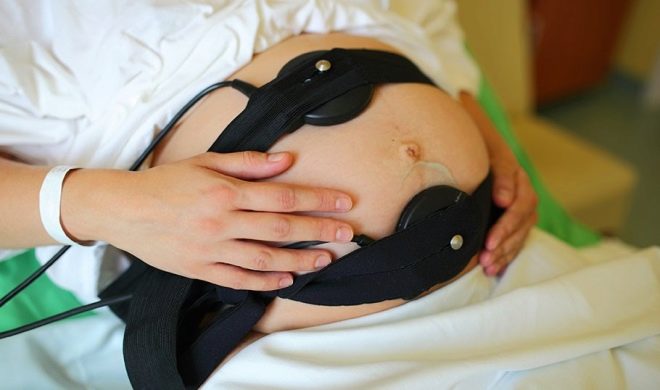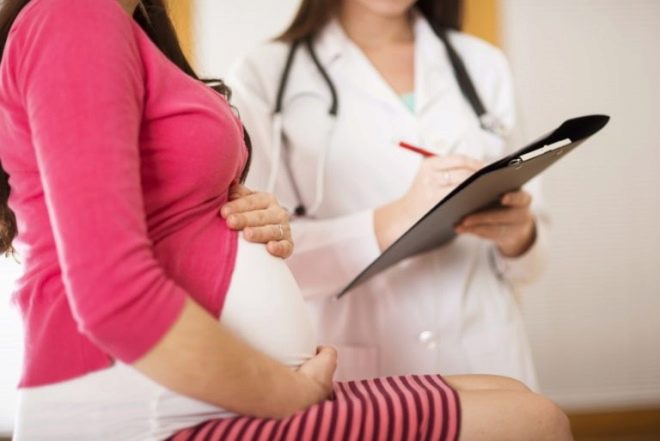29 week of pregnancy: what happens to the fetus and the expectant mother?
29 week of pregnancy is difficult and controversial. The condition of the woman continues to change, and not all changes are perceived by her with ease. Preparations for going on maternity leave are underway, and future mothers of twins or triplets are already enjoying the rest. Everything that is happening now with the baby and his mother, in all the details below.
How many months is it
28-29 obstetric week opens the eighth obstetric month of pregnancy. Now you have exactly 7 months and a few days from the first week of the eighth month. In the generally accepted calendar months, 6 months and 3 weeks have passed. It took 27 weeks from conception, and 25 weeks have passed since the delay in menstruation.
You are at the very beginning of the third trimester. He is sometimes jokingly called the “school of the young fighter”, since the difficulties that the mother faces in the last third of the baby’s term can be interpreted as rehearsing other difficulties that await her in the early postpartum period.
From the point of view of doctors, there is a perinatal (prenatal) period. And all the changes that are happening now with the future mother, have only one goal - preparation for the upcoming birth.
About 11 weeks until delivery, but this is a very probable term. In the DA only a small part of pregnant women give birth, in 95% of women, childbirth occurs either for the period before the expected day of birth, or for the period after that date.
Feelings of a woman
The future mother has a “suitcase” mood. In a week she will have to go on maternity leave, and now, even if she still goes to work, the team doesn’t have much benefit from her. But only a small percentage of pregnant women decide on such a “feat” as work at the 29th week. Most try to still take a vacation - first regular, and then maternity (sick leave is issued for a period of 30 weeks).
If there is no next vacation, then in seven months a woman could easily “save up” time off to secure an extra week of rest.
The need for rest is now noticeably increasing. With great difficulty, long standing and sitting are already given, it is harder and harder to walk, ride in public transport and on your own car. A woman quickly gets tired, complains of pain, needs to lie down and rest several times during the day.
Because of the grown belly, the woman almost does not see her legs in an upright position, does not see where she is going, the walk has become awkward. All this leaves its mark on the state and mood of the pregnant woman - it is not so easy to feel yourself as a seal.
Stirring baby
The nature of the baby's movements at the 29th week of pregnancy varies in almost all pregnant women. In the uterus there is not enough space for swimming, somersault and coups, which your pet owner liked so much before.
Now the movements are not like active "dancing". The baby began to turn more smoothly more often, and sometimes allow himself to "put" the heel or fist under the ribs of the mother.
The limbs of the baby, he exhibited in the direction of the anterior abdominal wall - a separate topic for conversation.Thin women with a small fat layer on the stomach can already distinguish the outlines of the heels of the crumbs.
It is believed that week 29 continues the period of peak activity of the fetus, which lasts up to 32 weeks. But, compared to a stir two weeks earlier, the baby began to move a little less and more calmly, but his “pokes” and “kicks” became more tangible, and sometimes even painful.
The change in the nature of the movements is also influenced by the development of the fetal nervous system. Now the little one controls his movements a little better, and therefore the chaotic strokes of his arms and legs, which were so well felt a month ago, now occur less and less.
The movements at the 29th week have a certain frequency, regularity and even cyclicality. The future mother already knows the routine of her offspring well - when he sleeps, when he becomes active. From this week, all pregnant women should start counting the movements of their baby, and provide the results of calculations to the attending physician at the next appointment.
The movements at the 29th week are a special “language” of communication between mother and child. If the contact is established, then the crumb willingly "responds" with a light kickskin to the hand put by the mother on the tummy. When the baby does not like the pose of the parent, he tries his best to attract attention. With active movements, the baby reminds the mother that it is time to eat.
Stirring intensifies in clear weather and subsides in rainy. Kids are very meteosensitive. The fetus will sleep more even if all the time you want to sleep with his mother. In response to the joyful emotions of the woman, the baby in the womb is activated, and the stresses cause the production of specific hormones in the maternal organism, which somewhat inhibit the activity of the baby.
Already, by the nature of the movement, we can conclude about the temperament of the baby: there are moving and restless children, and there are quiet and lazy "Sony."
How to count the movement?
Counting perturbations was considered to be a fairly informative method of obtaining information about the state of the fetus in obstetrics another 20-30 years ago. Now the doctors are not making a big bet on this method. However, they emphasize that it is necessary to consider perturbations, because a woman does not have the opportunity to undergo CTG daily or to do ultrasound. Counting is needed primarily for the very future mother, to be calm for the condition of the crumbs.
To properly approach this issue, you need to make a special notebook diary or print out a table in which data about the time of perturbations will be entered. There are several methods of counting, but in women's clinics the Pearson method, which is popularly called “Count to ten”, is a particularly beloved one.
Its essence is quite simple. It is necessary to count the movements and add every tenth movement to the table. Begin counting at 8 or 9 in the morning, finish at 20 or 21 o'clock. The norm is the presence of 10 perturbations in the period of activity for half an hour.
No less convenient is another method - the Cardiff method. Its essence lies in the registration of ten movements in 12 hours. If the baby “picks up” 10 such episodes in the allotted time, everything is fine with him.
According to the Sadovski method, the activity of the baby is proposed to be assessed within one hour after the mother has eaten tightly. The presence of 4 shifts and more is considered normal.
Many women have a question, what is considered a stir. Hiccup does not apply to them, it is not necessary to count such rhythmic jolts inside. For the movement take one movement, if it is single, or a series of jolts and coups, if they follow one after the other. For example, your baby pushed mom with a pen, and then turned. This is one stirring. If the crumb just pushed, then this, too, is one stir.
Reduced motor activity may be a sign of severe hypoxia. An increase in activity may be a symptom of hypoxia at an early stage. The doctor should make conclusions, and he will not do this on the basis of a woman’s calculations, but on the basis of cardiotocography and Doppler ultrasound.
Counting perturbations is needed only to notice changes in the child's behavior as early as possible. Not always deviations from the norms are associated with pathology, pathology is not always manifested by a sharp change in the behavior of the baby. Everything is very individual.
Pains
A woman slowly begins to get used to different pain, because now they will accompany her to the birth. Even if the pregnancy is good, without complications, certain unpleasant, including painful, sensations can now be present.
The most common ones at week 29 are back pain and back pain. They are connected with the fact that the uterus continues to grow, and the ligaments that hold it, have to undergo almost "cosmic" overload: they stretch, become more durable. This process and causes complaints that hurt the loin.
The center of gravity with the growth of the abdomen has shifted, now the back muscles have to strain harder to hold a large chest and stomach, so the back hurts, aches and aches.
A woman can pay attention to the fact that the pain intensifies after physical exertion, standing, sitting, long walking. Sometimes sharp lumbago are added to the “aching” background, a consequence of the pressure of the large uterus on the nerve nodes and endings.
At week 29, most pregnant women literally suffer from the fact that the ribs hurt and "diverge". Pain in the joints of the lower extremities is a result of weight gain, noticeable by this time.
Feet hurt, if a woman is standing or walking for a long time, knees and ankles suffer the most. At night, gastrocnemius muscle spasms are possible - these are manifestations of calcium deficiency in the pregnant woman’s body, because the baby “took” a large amount of this mineral from the mother’s body, and the process of mineralization of its skeleton is still ongoing.
Increased blood pressure, characteristic of this period, causes many headaches. Headache usually in the afternoon, this is due to the fact that the load on the vessels and the heart of a woman is now enormous.
If the pains are in the nature of a migraine, they repeat constantly, they get worse, you should inform your doctor. Monitoring blood pressure and its concomitant normalization treatment will help reduce the number of headache attacks.
The body begins to actively prepare for the upcoming birth, therefore, at week 29, every second woman has a pubic bone. It is not necessary to worry much about this, because such sensations are connected with the softening of the pelvic bones and ligaments. Under the action of the hormone relaxin, they begin to expand in order to release the baby's head from the pelvis at the right moment.
However, you need to know that excessively intense pain in the area of the pubic articulation can be a sign of a symphysitis - a dangerous complication of pregnancy, in which delivery in most cases is carried out by cesarean section. Symptoms such as increased pubic pain at night, inability to sit, stand, walk on the stairs should alert the woman.
At week 29, any pain is dangerous if it increases, accompanied by a deterioration of the general condition, abnormal discharge from the genitals.
If such pain occurs, you should not wait to see a doctor; you must immediately call an Ambulance.
Allotment
Allocation can now give a woman a lot of trouble and cause many questions. They become significantly larger, the consistency of the discharge becomes more fluid. This is due to the fact that more estrogen hormones are produced in a woman's body in the third trimester of pregnancy.
Increasing the amount of secretions is a kind of protective mechanism that helps the sexual ways to remain clean and healthy, because soon the baby will have to go through them.
Normal vaginal microflora is maintained at the secretory level, but this does not mean that infection is now impossible. The very fact of the abundance of secretions creates the risk of infection, provided that the woman is not sufficiently attentive to the issues of intimate hygiene.
Normal discharge in the 29th week is considered to be discharge, which have a slightly watery consistency, light color - white or slightly yellowish, odorless or have a weak fermented milk smell.
Everything else - the allocation of pathological. They can be different: bloody, purulent, thick whitish. An important nuance: pathological discharge in one way or another is accompanied by discomfort, itching, cutting, burning in the perineum, unpleasant smell.
If non-normal secretions are detected, the woman should immediately contact her doctor.Because the most common cause is infections. So, green secretions can be a symptom of bacterial infection, genital infection, white and thick, with the texture of cottage cheese - this is thrush, and white scanty with severe itching and plaque on the genitals are a sure sign of fungal infection.
Blood discharge at this time can talk about problems with the placenta or the onset of preterm labor. Watery, clear, odorless discharge may be a sign of leakage of amniotic fluid. If at the 29th week the water is completely withdrawn, it will be rather difficult to confuse it with something, because the water is already more than a liter.
In order not to miss the changes in the nature of the discharge, a woman should use thin sanitary pads, “daily”, tampons during pregnancy are strictly prohibited for two reasons: they delay the discharge of vaginal secretions in the genital tract, which creates a breeding ground for bacteria to grow, and the tampon insertion process itself can be associated with the introduction of bacteria into the genital tract.
Changes in the body
A woman becomes more irritable, her mood is unstable. It affects the fear of the upcoming childbirth, and those who give birth for the first time, and those for whom the birth will be second, third or even fourth. Fear can be so strong that you can’t think of anything else.
You can’t keep fear in yourself; a woman definitely needs to talk about this with relatives or a psychologist in a women's consultation. On the physical level, changes occur like this.
Uterus
From week 29, the uterus will not grow as fast as it used to. Growth will continue, but it will be less dynamic. Now the height of standing of the bottom of the uterus is within 27-31 centimeters. Above the navel line, the uterus rises 9 centimeters.
The main reproductive female organ is in the abdominal cavity, tightly supporting the diaphragm, which makes it difficult for a woman to breathe. Shortness of breath can accompany the expectant mother almost constantly: while walking, doing household chores, even with little exertion. Now is the time to start doing breathing exercises and “sharpen” the breath in childbirth.
The large uterus, which is larger than a basketball, causes all the abdominal organs to make room. Hardest "gets" the stomach and bladder. Pressure on the stomach causes painful frequent heartburn in a woman, and pressure on the bladder causes frequent urination. Uterine pressure on the intestines contributes to constipation.
The length of the cervix at week 29 begins to gradually decrease. While in normal it is 35-40 mm, but in the coming weeks the cervix will become shorter, and the rate will begin to be calculated from 30 mm. This is due to the prenatal preparation of the body. The neck begins to "ripen". Closer to childbirth, it will become short, the internal pharynx will begin to open slightly, and during fights, the external pharynx will also open.
If a woman has previously been established cervical insufficiency, a special control will be established after 29 weeks.The baby grows, quickly gains weight, “grows heavier”, a weak cervix can not stand, and under such pressure to open up ahead of time. From such an outcome, a woman is protected by measures taken by her and a doctor earlier - obstetric pessary or surgical sutures placed on the neck.
From week 29, a woman can be recommended bed rest or half bed rest, in some cases - stay in a hospital.
Women notice that at week 29, the uterus more often comes in tone. If this happens too often, medications can be recommended to the woman to relax the smooth muscles of the uterus - "Papaverine», «No-shpa».
Now women are strongly advised to wear a bandage. It will help reduce the load on the back and lower back, as well as the pressure on the cervix.
Weight gain
Weight gain continues, and it is felt very clearly pregnant. The numbers on the scales may even frighten, but the woman should be well aware of what these numbers are made of. This is the weight of the fetus, amniotic fluid, placenta, the uterus itself and the weight of the increased blood volume in her body.
Simple mathematical calculations will tell you that not all that the scales show is its own weight. Thus, the placenta weighs about 400 grams, the amniotic fluid in the fetal bladder - more than a liter, the uterus weighs about 650 grams, and the baby itself - almost one and a half kilograms.
In a week, a woman normally picks up an average of 350-400 grams. The total weight gain is estimated individually, taking into account the weight of the woman before pregnancy and her physique.
- If a woman had a weight decibit before pregnancy, now her total increase could be 11.5 kilograms, and this will be the norm.
- Women who had a normal physique and normal weight, by the 29th week should ideally gain no more than 9.5 kilograms.
- Women who have had problems with excess weight, by this time should gain no more than 6.2 kilograms.
From gaining weight on this period, there is no way to hide or hide. It is inevitable. But a woman is required to carefully monitor the weight gain and avoid pathological excess of norms. Extra pounds aggravate the course of childbirth, contribute to a more difficult recovery in the postpartum period.
If the expectant mother eats properly, fulfills all the recommendations of her doctor, leads a rather active “undivided” lifestyle, but for some reason the weight comes pathologically, this may indicate that edema is formed in the future mother's body. They can be visible and invisible, internal.
In any case, preeclampsia requires careful monitoring by a doctor, and, if necessary, treatment.
Training bouts
Training bouts at week 29 occur in about 65% of pregnant women. Many of whom they began a few weeks ago, had already managed to get used to them, stopped being afraid. The presence of false contractions indicates a short-term tone of the uterus. It may take a few seconds or minutes. Such contractions are repeated irregularly and have no effect on the condition of the woman and the baby.
Many believe that once Braxton-Hicks contractions are called training, then they will “signal” about a speedy birth. This is not true.
In primiparous women, false contractions can occur quite early - after 20 weeks and continue until 40 weeks of pregnancy. And for future mothers who already have childbirth experience, false contractions usually do begin in the second half of the third trimester, and sometimes even a few days before the true, generic contractions.
There are women who do not experience training fights during pregnancy, and this does not affect the process of their delivery. False arms are different from real ones in that it is relatively easy to “fight” with them. It is enough to lie down, relax, take a nap, take a warm shower, and there will be no trace of the tension of the uterine muscles.
Other changes
A woman becomes incredibly forgetful. Those who give birth not for the first time can easily see this.To do this, just try to remember your experiences, feelings and events that occurred in life at the beginning of the third trimester of a previous pregnancy.
99% chance that this will not work. This period is poorly remembered. This is due to the fact that under the action of hormones the woman’s world view is somewhat smoothed out, she does not react so painfully to what is happening, but the memory is not very durable.
The skin of the woman becomes more tender, vulnerable, dry. She is more susceptible to allergies, the effects of temperature. Now you should not sunbathe hard and use new cosmetics, it can cause a negative reaction of the body.
Freckles and moles become brighter; pigment spots may appear. Due to the stretching of the skin, an unpleasant itch in the thighs, chest, lower and lateral parts of the abdomen appears. Ugly striae, often called stretch marks, can make themselves known.
Women in the 29th week of pregnancy have increased sweating, it can “throw” into fever, symptoms of hemorrhoids, varicose veins can appear on both the lower limbs and on the external genital organs.
The chest deserves special attention. She continues to "fill up", the mesh of blue veins, translucent through the skin, becomes more pronounced, nipples sulking. So the mammary glands are preparing for the upcoming breastfeeding. Many women this week from the breast increases the release of colostrum, which is a nourishing fluid, which is essentially the forerunner of breast milk. If a woman has already breastfed, then colostrum may be greater than that of nulliparous and previously unfeeding women.
Baby development
Your baby is now quite big. He no longer looks like a tadpole, now it’s a full-fledged little man, just still a little one. Baby weight at 29 weeks can reach 1.5 kilograms. On average, it ranges from 1350 to 1500 grams.
Girls are slightly lighter than boys, their average weight is 1200-1400 grams. The height of the baby is in the range from 38 to 40 centimeters.
Externally, the baby looks like a decent sized doll. There is an active weight gain. Growth slowed slightly compared to the second trimester. Most children now occupy the head position in the uterus, that is, they are turned head in the direction of exit from the uterus.
If the baby is now in pelvic presentation or located across the uterus (which happens infrequently), the probability that the position of the fetus will change, exists, but it is not so great anymore.
To increase the chances that the baby will independently turn to the desired position, doctors prescribe a special gymnastics.
Appearance
Subcutaneous fatty tissue, which the baby has diligently “engaged” in the last few weeks, at about week 29 is about 5% of the baby’s weight. It may seem that 5% is very small, but in fact this amount of subcutaneous fat has already transformed the crumbs beyond recognition. He has ceased to be thin, now he has cute plump cheeks, fists, a rounded butt has begun to appear, not so thin as before, the tummy and chest look like.
The folds and wrinkles on the body and face smoothed out, the skin is no longer as thin as parchment paper, blood vessels do not appear through it, so the skin no longer looks red.
Pigments are synthesized in the body, the skin at the expense of them acquires the color we are used to, and the hair on the head of the baby begins to darken. Up to this point, all the little ones were blondes and blondes.
The color of the iris until all babies are the same - sky blue. Eyelashes become slightly longer, grow small nails on the hands and feet. If a child now it will be born, it will not look like advertising karapuzov compared to full-term children: the baby looks thinner and smaller.
But the process of accumulation of subcutaneous fat does not stop for a minute, because it is important not only for the appearance of the baby, but also for its viability. Subcutaneous fatty tissue is necessary to retain internal heat. That is why premature babies who do not have enough subcutaneous fat lose their heat and need warming.
The proportions of the body of the baby approached the proportions of the newborn. The head is no longer the largest part of the body, legs and arms have the usual proportions. The baby becomes crowded, he has already adopted a natural flexion pose.
Now on the ultrasound it will be much harder to find out the sex of the child, because the legs are already tucked into the stomach, and between them there can be knobs and a umbilical cord.
The face of the baby at this time can accentuate and touch future parents, who decide to look at their child through 3D or 4D ultrasound. Not only is the crumb already clearly similar to dad or mom, and this is a clear resemblance, he also makes funny faces, grimaces, smiles and yawns.
If such a moment can be captured in the ultrasound image, it can be considered a great success - such a “photo” will certainly decorate the family album.
The body of the child is still covered with original lubricant and thin, colorless hair, which is called “lanugo”. They protect delicate and vulnerable children's skin from the constant effects of the aquatic environment, but at 29 weeks the baby began to gradually get rid of lanugo and part of the original lubricant, because now his skin is four-layer and more durable.
Nervous system
The development of the nervous system in the 29th week of pregnancy is one of the most intense processes that occur in the body of a baby. With unprecedented speed, new nerve cells are formed, new neural connections are formed, which means that your baby is becoming more and more developed and skillful.
He has developed more than a dozen different reflexes provided by nature for the survival of man and mankind. He can suck, swallow, grab, bends, if something touches the lower part of his abdomen, he has nerve endings on the skin, neck and muscle, and tendon reflex skills.
If a child tickles his palm, he spreads his fingers, if something touches the foot, fingers on his legs “spread out” like a fan. Actively trained respiratory reflex. Specific movements of the chest on a signal from the brain or due to stimulation of certain areas of the skin occur irregularly.
It is believed that since the respiratory organs are preparing for independent life outside of my mother's tummy. Doctors say that in addition to this, respiratory reflex movements improve the baby’s blood circulation, since the pressure in the abdominal cavity at the time of their occurrence decreases, and the blood flow to the vena cava increases.
The brain is now interconnected with all organs and systems, it already partially controls movement, activity is recorded in the areas responsible for speech recognition. At week 29, the baby is completely determined with the priorities - he is already left-handed or right-handed.
Depending on which hemisphere of the brain prevails, he chooses either left or right hand for sucking or grabbing more often. Sometimes kids equally well possess two hands, such children are called ambidexters.
The formation of the cerebral cortex ends. The kid receives and "processes" signals from the senses. He hears the noise of the maternal organism - the flow of blood through the vessels, her voice and the sound of her heart. He also reacts to sounds from the outside, but so far only on quite loud ones, since the abdominal wall and the waters in which the baby is located do not let in quiet sounds.
The development of visual function continues, the baby has already learned to close his eyes from the bright light directed at the future mother's belly. At the 29th week a part of the mucous plug comes out of the nasal passages, now the amniotic fluid also enters the nasal passages.
Touch is well developed, but best of all for the child is the taste sensation: he already knows how to distinguish rather subtle nuances of the taste of amniotic fluid.
Internal organs
Internal organs are formed and now just grow. The heart and kidneys, liver, stomach and bladder increased in size. The digestive organs are almost ready for the birth of the crumbs. They "rehearsed" the interaction. From the stomach, amniotic fluid, swallowed by the baby, is sent to the intestine, which has already learned to shrink. The kidneys produce up to half a liter of urine per day.
In the intestine, the original feces accumulate - meconium. It has a dark green, almost black color due to bile entering the intestine. Meconium will leave the intestines after the birth of the child. Sometimes this happens in utero, but this is not considered the norm. This usually happens with severe hypoxia.
The crumbs heart supplies all organs with blood. More than 20 liters of blood passes through it per day. The development of lobules is completed in the liver. Continues to ripen lung tissue. Man needs small vesicles of the alveoli in order to carry out gas exchange - to take oxygen and release carbon dioxide. In the alveoli of the fetus while there is no oxygen and carbon dioxide. Gas exchange is carried out through the placenta.
However, tiny alveoli prepare for independent work in advance. After they are filled with air for the first time, and this happens only at the moment of the first inhalation after birth, the alveoli should not stick together when you exhale. To this end, a specific substance is already being formed in them - surfactant.
If a baby is born prematurely, then its viability will be determined, including the amount of surfactant. When it is deficient, the child may develop acute respiratory failure.
Viability
According to statistics, children born on week 29, in 96% of cases, survive and quickly gain weight. According to medical concepts, such births are considered premature, and children - deeply premature. They have every chance to survive and do it without any special consequences for the body.
Of course, babies born this week cannot do without medical help. They are placed in a special incubator in which they are powered through a probe, oxygen, in which the desired temperature is maintained. In it, the baby will be as much time as he needs in order to gain weight to at least 1 kilogram and 700 grams. Then the child will have some time with his mother to be in the hospital of the children's hospital under the supervision of doctors in a special heated bed.
And only when the doctors make sure that the danger has passed, the lungs breathe, and the subcutaneous fat keeps the heat warm, when the weight of the baby crosses the threshold of 2 kilograms, the family can reunite - you can go home.
Baby on ultrasound
Until the third scheduled ultrasound is still long enough, and the first two have long passed. At week 29, an ultrasound scan can be performed only for two reasons — either by a doctor’s referral if pregnancy is suspected or by the expectant mother’s own request on a paid basis in a private clinic.
Many pregnant women who have not yet managed to make a video recording or ultrasound images, it is during this period that they go to the rooms, where ultrasounds are done in a three-dimensional or four-dimensional format.
In addition to the great pleasure that future parents can get from the contemplation of their offspring, there are sizes that are a favorite topic for communication between pregnant women - whether the child meets the standards for the current term. For week 29, the following fetometry values are considered normal:
BPR - 71-82 mm;
LZR - 86-102 mm;
DBK - 52-60 mm;
DKG (shin or length of the tibia) - 47-55 mm;
DKP (length of the bones of the shoulder) - 47-55 mm;
Head circumference - 255-295 mm;
Abdominal circumference - 228-278 mm.
It is necessary to determine the presentation of the baby, the degree of maturity of the placenta, the number of vessels in the umbilical cord, and also examine the internal organs of the crumbs. Now they are well visualized: if there are defects or abnormalities in development, the doctor at this time will most likely be able to determine this.
Hazards and Risks
Since the woman almost doesn’t see her own legs due to the large abdomen, the probability of falling and getting injured increases at week 29. In addition, reduced immunity creates the risk of any infectious disease, as well as the exacerbation of chronic ailments.
The main risks in week 29 are as follows:
- preterm delivery;
- intrauterine growth retardation of the baby;
- placental insufficiency;
- the development of preeclampsia;
- ARVI, flu, cold;
- conjunctivitis;
- cystitis and pyelonephritis;
- hemorrhoids.
Any woman should treat ailment together with her doctor. Self-medication can now be more dangerous than the disease itself.
A runny nose, cough, high fever, impaired urinary function, swelling, pain - for each case with individual amendments, the doctor will be able to recommend medications that can now be taken, as well as give recommendations on how to prevent complications.
Analyzes and surveys
At week 29, a woman is likely to be given directions for testing before going on maternity leave.
The list of them is quite large:
- general urine analysis;
- general blood analysis;
- blood chemistry;
- a blood test for hepatitis B and C;
- blood test for HIV;
- blood test for syphilis (PB);
- cytological analysis of a vaginal smear.
Women with a negative Rh factor this week may be further directed to a blood test for antibody titer. Exactly at 28 weeks or for 29 weeks, they are given an injection of anti-rhesus immunoglobulin.
If you suspect that the fetus is not well, the doctor this week may well prescribe CTG - cardiotocography.
Recommendations to expectant mothers
29 week of pregnancy - a period in which a woman needs to restore order - in their own thoughts, in their affairs, in the house. Now, as never before, it is important to see the target and calmly move towards it without panic. Recommendations to future mothers can be given such.
- Review nutrition. Exclude from the diet of fat and fried, salted and smoked, reduce the amount of salt and sugar consumed. Add more vegetables and fruits, increase the daily calorie intake to 3200 Kcal. Energy for women and children is now needed, and harmful products are not needed at all. Collect calories from healthy dairy products, meat, fish. Now it is very important that in the diet of the future mother was both animal and vegetable proteins.
- Calculate maternity payments. To know how much a maternity allowance a woman can count on, it is worth contacting the accounting office at your place of work or make a calculation yourself using a convenient online calculator.
- Travel wisely. If the state allows you to go to the sea, it is best to clarify with the airline what are the rules for transporting pregnant women. In most companies, a woman after 28 weeks of pregnancy during the flight is asked for a certificate from a doctor that air travel is not contraindicated for her. The certificate must be certified by the seal of the medical institution.
- Be careful when having sex. They are useful at any time if there are no contraindications. From the 29th week of pregnancy, women often notice that the orgasm began to be felt stronger, and the desire, which intensified in the second trimester, was not lost. Eliminate postures with pressure on the stomach and deep penetration, do not allow sudden and intense movements.
- Sign up for courses for pregnant women. Now, when there are only a few days left before the decree, it's time to add to your plan for the coming weeks, remaining before delivery, attend courses for expectant mothers. They are in every female consultation.
You can come to classes with your husband, he will also have something to learn from doctors, psychologists.
Pregnant Reviews
Most expectant mothers in week 29 complain of insomnia. Sleeping on the back and stomach is physically impossible, and on the side it is very difficult to spend the whole night. Many do not even help a special orthopedic pillow for pregnant women, which ensures the fixation of a large abdomen.
Women begin to choose maternity homes, doctors, and discuss the possibility of partner childbirth. Experts advise a more careful approach to the choice of the hospital. No one forces to give birth at the place of residence if this institution is notorious.
With the introduction of the birth certificate, which will be given out in a week along with the sick leave, the woman will have the right to decide for herself where she wants to give birth. The main thing is to go to this hospital, talk to the doctors and sign the exchange card.
In the case of the onset of preterm labor with a signed “exchange”, the woman will be delivered not to the duty maternity hospital, but to the obstetric hospital she has chosen.
About what happens at the 29th week of pregnancy, see the next video.

